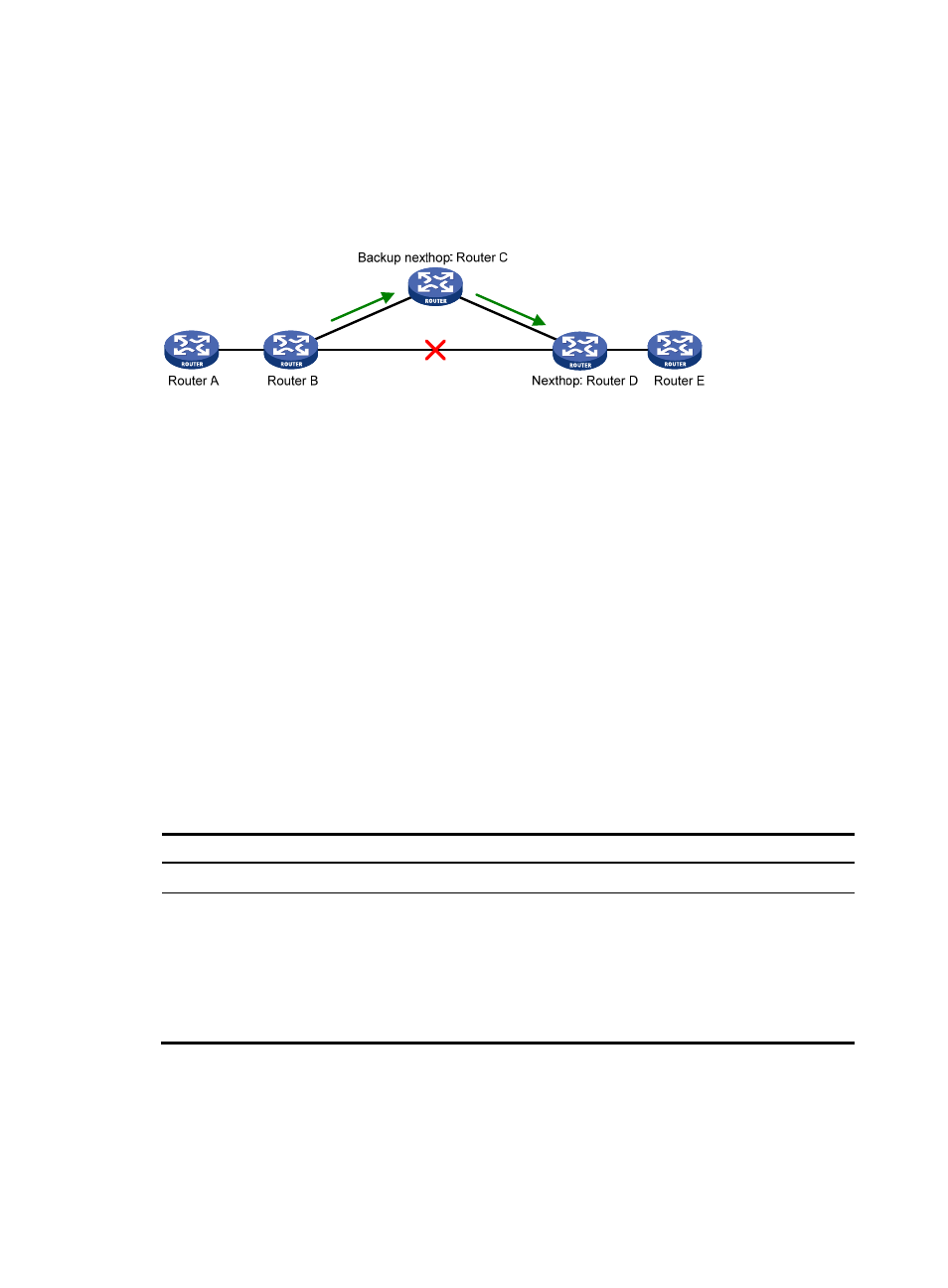Configuring static route frr, Configuration guidelines, Configuration procedure – H3C Technologies H3C S12500-X Series Switches User Manual
Page 25

11
29B
Configuring static route FRR
A link or router failure on a path can cause packet loss and even routing loop. Static route fast reroute
(FRR) uses BFD to detect failures and enables fast rerouting to minimize the impact of link or node failures.
Figure 1 Network diagram
As shown in
894H
Figure 1
, upon a link failure, FRR specifies a backup next hop by using a routing policy for
routes matching the specified criteria. Packets are directed to the backup next hop to avoid traffic
interruption.
134B
Configuration guidelines
•
Do not use static route FRR and BFD (for a static route) at the same time.
•
Static route does not take effect when the backup output interface is unavailable.
•
Equal-cost routes do not support static route FRR.
•
The backup output interface and next hop cannot be modified, and cannot be the same as the
primary output interface and next hop.
•
Static route FRR is available only when the state of primary link (with Layer 3 interfaces staying up)
changes from bidirectional to unidirectional or down.
135B
Configuration procedure
To configure static route FRR:
Step Command
Remarks
1.
Enter system view.
system-view
N/A
2.
Configure the source
address of BFD echo
packets.
bfd echo-source-ip ip-address
By default, the source address
of BFD echo packets is not
configured.
For more information about
this command, see High
Availability Command
Reference.
